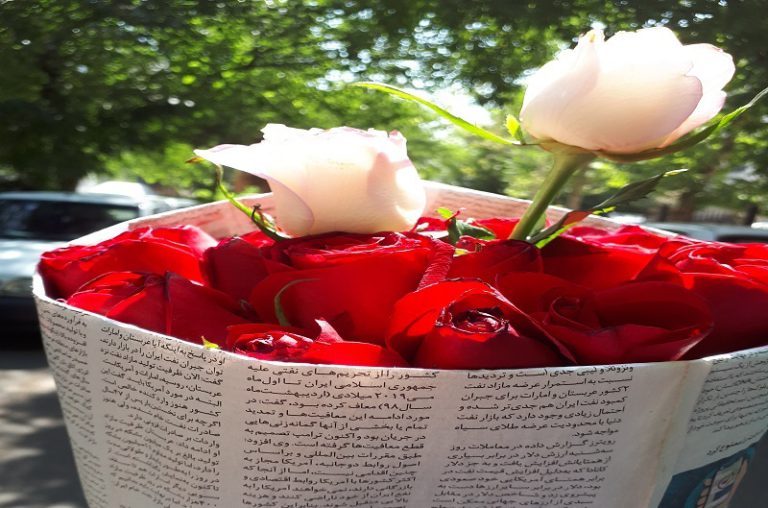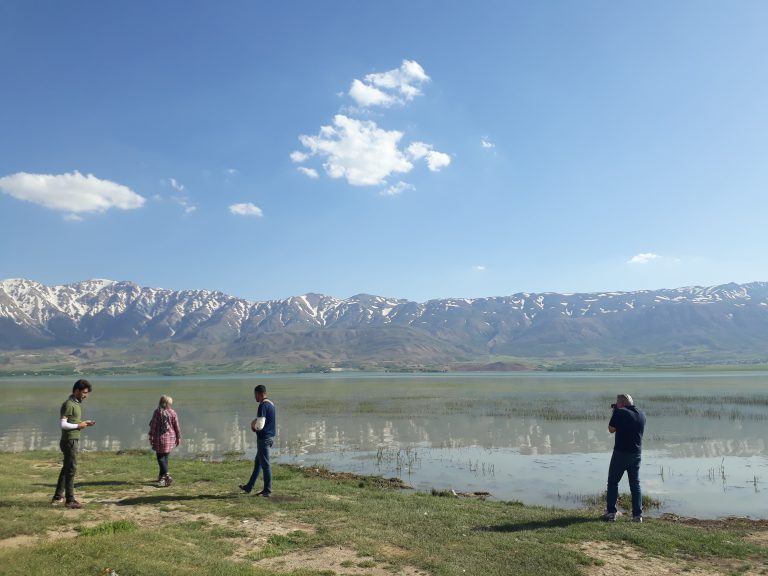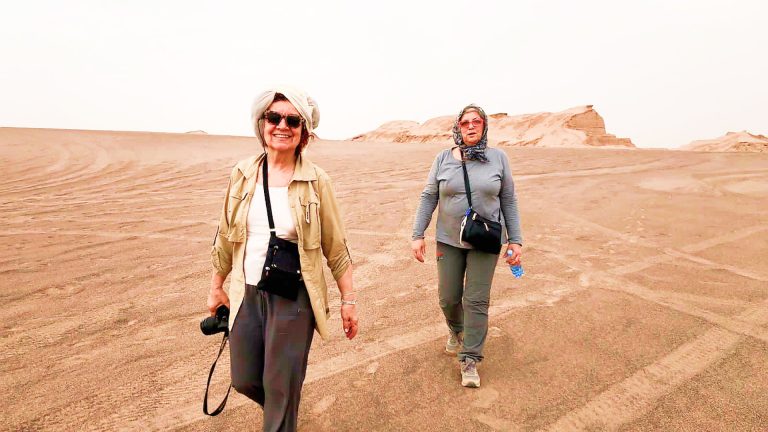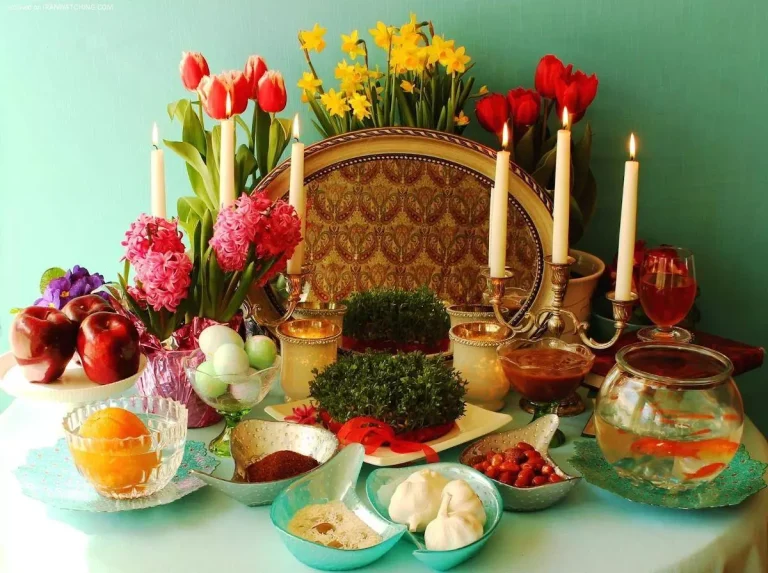Muharram in Iran and discovering the Soulful Melodies of it is a Journey of Commemoration and Reflection. Immerse yourself in the somber beauty of Muharram in Iran, where the entire country embraces a month of mourning in remembrance of Imam Hussein and the Battle of Karbala. Explore unique rituals and moving ceremonies that unfold across provinces and cities, from the heartwarming gathering of mothers with their infants dressed like Ali Asghar to the awe-inspiring Nakhl Gardani procession in Yazd. Join the sea of mourners clad in black, as they carry a symbolic coffin adorned with vibrant colors, symbolizing the funeral of Imam Hussein. In every corner of Iran, you’ll witness the unwavering devotion, unity, and reverence that pervades this sacred month, leaving an indelible mark on your heart and soul.
Muharram in Iran offers an unforgettable experience, especially as an attendee of the solemn Ashura Ceremony. While some attractions close, and some discourage travel during this period encompassing Ashura and Arbaeen, it presents a unique opportunity to partake in the grandest Shia Muslim observances. The scale and significance of these ceremonies are unparalleled, making it an exceptional event that leaves a lasting impression, unlike anything else you may encounter elsewhere in the world.
Exploring Ashura and Muharram in Iran
Ashura and Muharram hold profound significance in Iran, where it is considered a crucial month due to its position as the first month of the Islamic lunar calendar. This majority Muslim country observes Muharram as a period of mourning and reflection.
The origins of this somber commemoration lie in the Battle of Karbala, a tragic event that unfolded in 680 AD. During this fateful battle, Imam Hussein, the revered grandson of Prophet Muhammad (PBUH), along with 72 of his devoted companions, faced martyrdom while bravely confronting the formidable army of the Umayyad caliph, Yazid I. Despite being vastly outnumbered, Imam Hussein and his followers valiantly fought for justice, leaving an indelible mark on history.
The aftermath of the Battle of Karbala was heart-wrenching, as even women and children who accompanied Imam Hussein were not spared from the brutality. Deprived of water for days before the battle, they suffered immensely, enduring loss and humiliation. The tragic events of Karbala, coupled with the profound respect for Imam Hussein’s ideals, have kept the memories of Muharram and Ashura alive throughout the ages.
The essence of the Karbala model lies in its unwavering stance against evil, its celebration of freedom, and its resolute commitment to justice. This timeless narrative of resistance has transcended the boundaries of history and religion, becoming a source of inspiration for all who seek to stand against cruelty and oppression in any form.
In Iran, the observance of Muharram and Ashura stands as a poignant reminder of these values. The ceremonies held during this month are marked by expressions of grief, mourning processions, and religious gatherings that honor the memory of Imam Hussein and his companions. This period fosters a collective sense of unity among Shia Muslims in Iran, as they come together to pay homage to the legacy of courage, sacrifice, and unwavering principles exemplified by Imam Hussein.
Muharram in Iran is more than a historical event; it is a time of spiritual reflection, a testament to the enduring power of faith and the indomitable spirit of humanity in the face of adversity. The resonance of Ashura continues to inspire Iranians and people worldwide to champion the values of righteousness, justice, and compassion in their pursuit of a better world.
Unveiling the Mourning Congregations: The Emotional Journey of Muharram in Iran
The poignant observance of mourning congregations in Iran commences on the first day of Muharram and culminates in a crescendo of emotions on the tenth day, known as Ashura – the day of the epic battle. As the days progress, the somber atmosphere continues for 40 days, culminating in a significant day called “Arba’in.”
Throughout this period, various venues, including mosques, private houses, and specially designated Hosseiniehs, become the centers for mourning ceremonies dedicated to honoring the memory of Imam Hussein (AS). These places hold profound significance as devotees gather to reflect on the sacrifices made during the Battle of Karbala.
At the conclusion of these moving ceremonies, mourners, both men and women, display expressions of grief and wear solemn faces as they pay tribute to the memory of Imam Hussein (AS). In some instances, mourners take to the streets, accompanied by the rhythmic beat of drums and soulful chants, creating a deeply resonant and emotive experience.
Ta’zieh in Iran – A UNESCO Intangible Cultural Heritage
Ta’zieh, a traditional theatrical performance, holds a special place in Iran’s cultural heritage, recognized and cherished as a UNESCO Intangible Cultural Heritage. In various neighborhoods, streets come alive with re-enactments of the Battle of Karbala and the heart-wrenching suffering endured by Imam Hussein and his devoted companions. Actors adorned in red symbolize Yazid and his troops, while the children of the Prophet are represented in green attire, adding depth and symbolism to the powerful narrative.
Nazri: A Gesture of Devotion
During the Muharram ceremonies, a heartwarming tradition called “Nazri” takes center stage. As an act of devotion and compassion, many people generously distribute food, milk, tea, and other essentials to the mourners of Imam Hussein. They believe that by providing sustenance to fellow mourners in the name of the martyred Imam, they are blessed with divine rewards and spiritual grace. This communal act of giving carries profound meaning, fostering a sense of unity and compassion among the faithful.
Sham-e Ghariban (The Night of the Deserted)
The night of Ashura, known as “Sham-e Ghariban,” holds deep significance as a time of reflection and remembrance. In this poignant evening, people gather to illuminate their surroundings with candles, symbolizing the end of the ordeal faced by the orphans left abandoned in Karbala after the battle’s tragic conclusion. It is a solemn occasion, filled with heartfelt prayers and contemplation, as the community comes together to honor the memory of Imam Hussein and the noble sacrifices made by him and his followers.
These cherished customs and practices not only honor the legacy of Imam Hussein but also represent the enduring spirit of compassion, unity, and empathy deeply ingrained in the cultural fabric of Iran. Ta’zieh, Nazri, and Sham-e Ghariban serve as poignant reminders of the timeless values that continue to inspire and unite generations, transcending time and space with their powerful message of resilience and devotion.
Observing Prohibitions and Embracing Solemnity during Muharram in Iran
During the month of Muharram, there are several prohibitions and practices observed by devout Muslims in Iran to honor the significance of this sacred period, particularly in remembrance of Imam Hussein and the Battle of Karbala:
Shedding Blood: It is strictly forbidden to shed blood or engage in any form of violence during Muharram. This prohibition serves as a reminder of the peace and compassion that Imam Hussein stood for, even in the face of adversity.
Celebratory Events: People refrain from holding parties, weddings, or any form of joyous gatherings during the month of Muharram, as a sign of respect for the mourning period dedicated to Imam Hussein and his companions.
Entertainment and Music: Many people avoid engaging in entertainment activities, and listening to happy or upbeat music during the first ten days of Muharram, which culminate in the solemn day of Ashura. This abstinence allows individuals to focus on reflection, grief, and spiritual contemplation.
Ashura Day Work: Working on the day of Ashura in Iran is considered disrespectful, and therefore, most businesses and shops remain closed as a mark of reverence for the sacrifices made during the Battle of Karbala.
Closure of Shops and Attractions: On the day of Ashura, all shops and attractions are typically closed as a sign of respect and to allow people to participate in the various religious ceremonies and processions held across the country.
These prohibitions and practices during Muharram highlight the deeply ingrained reverence for Imam Hussein and the solemnity of this important month in Iran’s cultural and religious heritage. By abstaining from joyous activities and focusing on mourning and reflection, Iranians demonstrate their unwavering devotion to the principles of justice, compassion, and sacrifice exemplified by Imam Hussein and his followers.
Ashura Day Attire in Iran: Embracing the Symbolic Solemnity in Black
On Ashura Day in Iran, it is customary for people to wear black or dark-colored clothing as a sign of mourning and respect for the sacrifices made during the Battle of Karbala. The entire country adopts a somber atmosphere, and the color black symbolizes the grief and sorrow associated with the tragic events of this significant day.
Whether you are actively participating in the religious ceremonies and events or simply showing respect for the occasion, wearing black or dark attire is considered appropriate and culturally sensitive. It demonstrates your understanding and acknowledgment of the solemnity of Ashura and the importance of commemorating the legacy of Imam Hussein and his companions.
By donning black clothing, individuals in Iran join together in unity, collectively honoring the memory of Imam Hussein and expressing their devotion to the principles he stood for – justice, compassion, and unwavering faith.
Experiencing Ashura in Iran: A Journey Through Unique Muharram Ceremonies
Every province and city in Iran embraces its distinctive rituals during the month of Muharram, creating a tapestry of diverse and heartfelt commemorations. One significant event takes place on the first Friday of Muharram when mothers gather with their infants dressed like Ali Asghar, the 6-month old son of Imam Hussein who tragically lost his life on that fateful day.
Yazd, known as the Hosseinieh of Iran, stands out for its special and moving Muharram ceremonies. Throughout the first ten days of Muharram, you can participate in afternoon mourning sessions at the Bazare Khan, a uniquely adorned space within the bazaar, which also caters to tourists.
The pinnacle of Yazd’s Muharram observances is the Nakhl Gardani, held in various parts of the city. Among them, the most magnificent and crowded ceremony takes place in Taft city. To secure a good vantage point to witness the grandeur of this event, visitors arrive hours before the ceremony to find a spot on the rooftops of local houses.
Nakhl Gardani is a cherished ritual that symbolizes the funeral of Imam Hussein on Ashura. In Amir Chakhmaq Square, another prominent location, people gather to partake in this profound ceremony. A coffin-like structure, adorned with black fabric and vibrant colors, is carried through a sea of mourners clad in black.
Yazd’s Nakhl Gardani has garnered widespread fame in Iran and is deeply entrenched in the local culture, earning recognition as one of the country’s national cultural heritage by the Cultural Heritage Organization.
Immersing oneself in these unique Muharram ceremonies in Iran offers a powerful and emotional experience, providing a glimpse into the rich tapestry of devotion, unity, and reverence for Imam Hussein and the timeless values he represents.
Are you eager to experience the profound and moving Muharram ceremonies in Yazd, Iran?
Allow us to assist you in making your journey a meaningful and unforgettable one. We specialize in helping travelers connect with the heart of these sacred observances, ensuring you have an authentic and respectful experience. Whether you seek to attend the Nakhl Gardani procession or join the afternoon mourning sessions at Bazare Khan, our team is here to guide and support you every step of the way. Embrace the somber beauty of Muharram in Iran and witness the rich tapestry of faith, unity, and reverence that unfolds during this significant month. Contact us now, and let us help you embark on this soulful journey of commemoration and reflection in Yazd.




